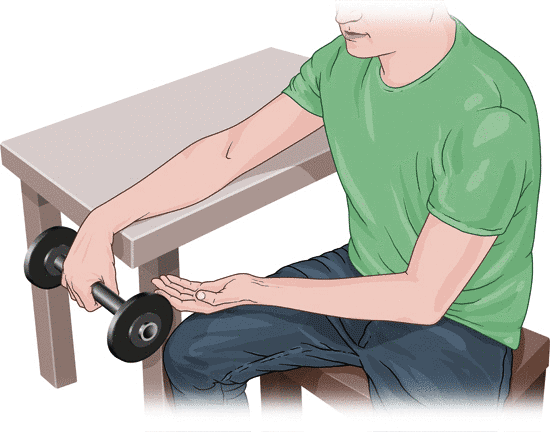Tennis elbow: Strengthening and stretching exercises

Special stretching and strengthening exercises can relieve the symptoms of tennis elbow – but patience and perseverance are needed too. As shown in the following examples, the exercises are easy to do and fit into everyday life.
In most cases, the symptoms of tennis elbow go away within one year without any special treatment. To try to make them go away sooner, people can do stretching and strengthening exercises. The best studied type of exercises are known as eccentric exercises. The aim of these exercises is to stretch and strengthen the extensor muscles in the forearm. These are the muscles that you use when doing things like hitting a tennis ball with a backhand stroke or putting in screws.
Only doing stretching exercises is also often recommended, although it’s not yet clear whether it helps.
You can talk to your physiotherapist or doctor about which exercises are most suitable for you.



